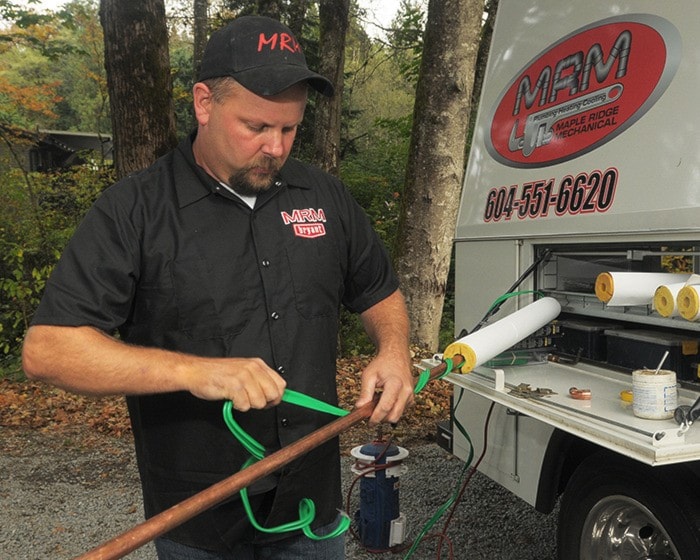It's back to reality on the Wet Coast this week as the incredible run of sunshine and warm weather has given way abruptly to autumn rain and cooler temperatures.
Mother Nature's quick shift didn't give homeowners lounging in the early autumn sun much time to switch into action to winterize their homes and increase the value in their investment.
But now, there's no denying: it's time.
"Preventative maintenance is extremely important to save you money in the long run," says Bill Robinson of Maple Ridge Mechanical, noting it's time to check both big appliances like your furnace and smaller, sometimes forgotten, items like outdoor taps.
Start with your gas furnace and fireplace. If these heavily used pieces of equipment falter the consequences can be deadly, leading to carbon monoxide poisoning that can cause symptoms ranging from flu-like headaches and nausea to death.
More than 1000 people a year are affected by carbon monoxide poisoning, according to CMHC statistics.
Carbon monoxide is an odorless colourless by-product of fossil fuel combustion that can leak from your gas furnace or fireplace if vents to the outside are blocked. This deadly oversight can be caused by years of poor service or something as simple as a bird or rodent choosing to nest in the vent.
It's important to hire a qualified licensed heating contractor to inspect the gas-fired heating devices in your home, Robinson says. Most people can easily change their own filter, which will save you a few dollars, he adds.
While you're at it, check your carbon monoxide detector – or buy one, says District of Maple Ridge Fire Chief Peter Grootendorst.
"It's really sad to see when you have whole families affected by carbon monoxide," he says, and also warns people not to use generators or camp stoves indoors when the power goes out.
Wood burning fireplaces need to be serviced to prevent creosote buildup that can cause chimney fires. These types of fires have decreased substantially as gas becomes more prevalent. But the fire department is still called out a half dozen times a year, says Grootendorst.
Once the most important health-related inspections are done, it's on to other repair and maintenance work that will save you money and maintain the value of your home.
Robinson says making sure your pipes are properly protected is one of the smartest places to put your money and avoid pipes bursting during cold weather.
Homes made before 1996 likely do not have an automatic frost-free shutoff valve for outside taps, so he advises draining the line and shutting off the water to your home, which is likely located in the basement near the outside faucet.
He gets five to 10 calls a day about this problem alone during a freeze followed by a quick thaw each winter, he says.
"That's a huge service call you can avoid," he adds.
Exposed basement and crawl space pipes are another potential cause of burst waterlines in older homes and he advises insulating the pipes, perhaps with some professional guidance.
"It could save you an awful lot in the long run," he says.
Pipes aren't the only thing homeowners should consider insulating. Attics and interior wall insulation can cut heating bills and help keep your home moisture and mould-free. But one of the easiest things to do that can help you keep warm and lower your heating bill is pay some attention to the windows in your home.
If paint is chipping it's important to repair wood around windows and consider re-caulking or adding weather stripping.
The most effective solution to reducing heating costs would be to install double-pane windows that can reduce heat loss by up to 30 per cent according to CMHC. But this can cost thousands of dollars up front. Short-term fixes are possible however. Just pick a windy day and check windows and doors for air leaks. An inexpensive solution is shrink-wrap plastic designed specifically for windows.
And there is some financial help out there if you are hoping to make your home more energy efficient. The B.C. government's LiveSmart BC program of rebates for energy efficient retrofits is still in place, although work must begin 18 months before March 31, 2013.
Homeowners can get rebates on exterior and interior insulation, energy projects, window and door upgrades, and more.
Signs of carbon monoxide poisoning:
• low levels – headache, fatigue, shortness of breath, impaired motor functions;
• high levels – nausea, dizziness, chest pain, fatigue, poor vision, difficulty thinking, confusion;
• very high levels – convulsions, loss of consciousness, coma.
– Sources: Health Canada; Centre for Disease Control and Prevention.
